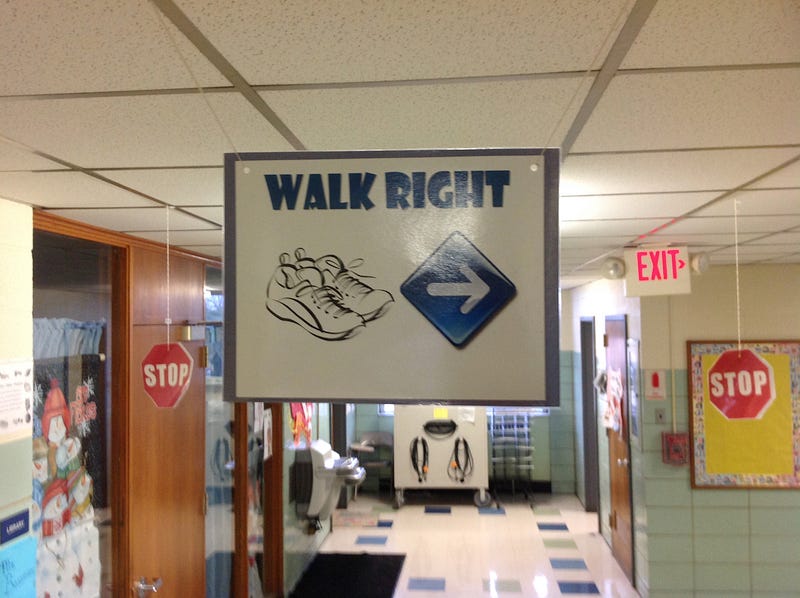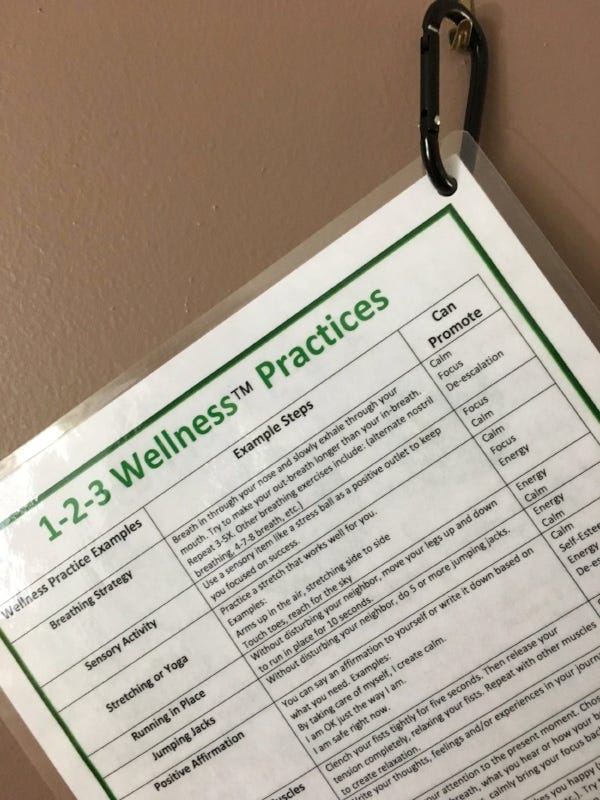Embedding Trauma-informed Practices within Existing School-wide Practices
Do you want to know my formula for creating successful trauma-informed schools?
Make the Complex → Simple!
Here’s how in 3 Easy Steps!
Step 1: Apply The 3 Components of Trauma-Informed Care into your Decision-Making Process:

Step 2: Assess how the 3 Components of TIC can be Infused within Existing Systems/Structures.
For example: Most elementary schools operate with some type of school-wide hallway procedures as shown in the pictures below. This particular school had already adopted a PBIS (Positive Behavior Interventions & Supports) framework and included hallway procedures in their matrix.



Step 3: Apply your Knowledge of the Neuroscience/Neurobiology within your Existing Systems/Structures.
Acknowledging and respecting this school’s PBIS journey can help staff become more receptive in understanding that a trauma-informed lens only strengthens existing practices. (This is so important as new initiatives in schools can come across as threats to pre-existing systems when viewed in isolation and create early adoption resistance)
Our Task: How to embed Mindfulness into what we are already doing?
1. Utilize existing PBIS Hallway STOP signs as opportunities for Wellness Breaks. Empower Student Line Leaders to lead One-Minute Wellness Breaks. Post or hang your newly adopted self-regulation strategies at all STOP sign locations throughout your school for student leaders or teachers to reference. (See image below as an example)

2. S.T.O.P. Practice
4. The possibilities are only limited to your imagination: Incorporate different colored floor tiles/designs in your walking patterns. “Hot lava” game. Line leader models a “Walk This Way” walking pattern for all to imitate. Asking students when they return to the classroom something they had observed differently on their walk, etc.
Call to Action: Be sure to include a few of your own ideas in the comments below.
Now go out and be the change you want to see!
DR. JIM WALTERS, AN EDUCATOR WITH OVER 25 YEARS OF EXPERIENCE SERVING IN BOTH SUBURBAN AND URBAN COMMUNITIES, WAS AN EARLY TRAUMA-INFORMED SCHOOL ADOPTER IN THE ST. LOUIS REGION. THROUGH HIS CONSULTING COMPANY; TRAUMAINFORMEDLEARNING.COM, HE NOW ASSISTS SCHOOLS IN THEIR QUEST TO BUILD HEALTHIER AND MORE RESILIENT COMMUNITIES THROUGH A TRAUMA-INFORMED LENS.


Comments (3)